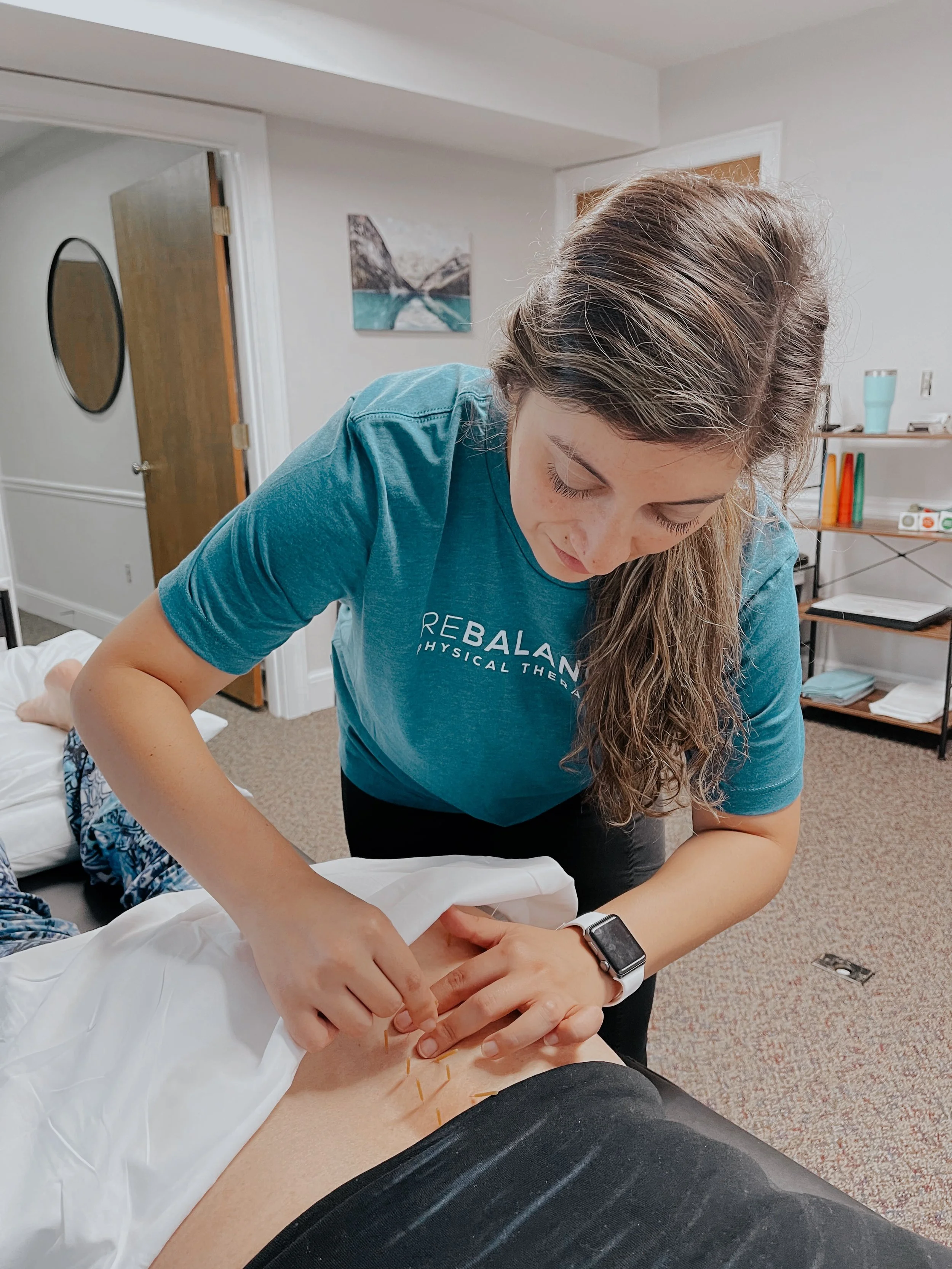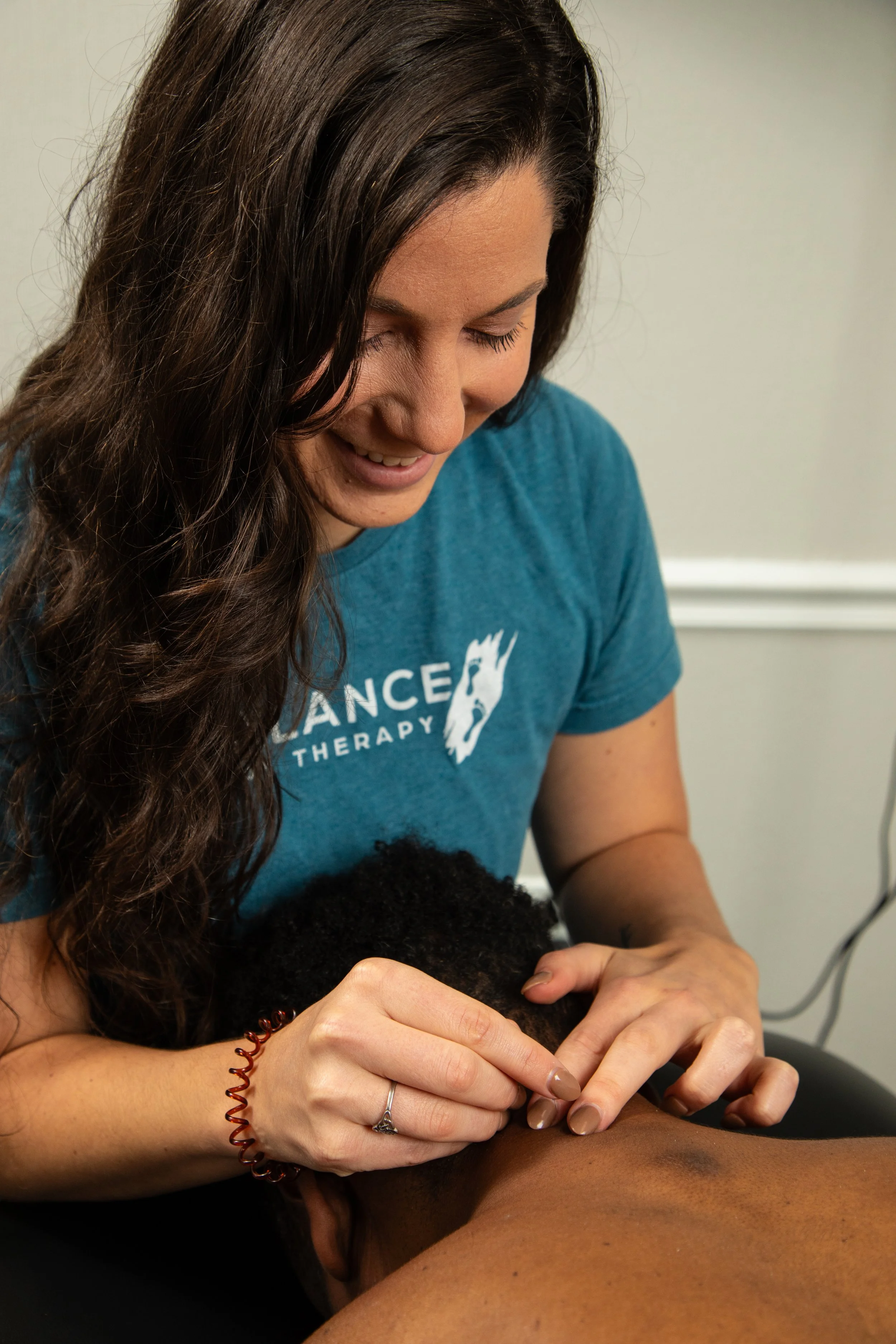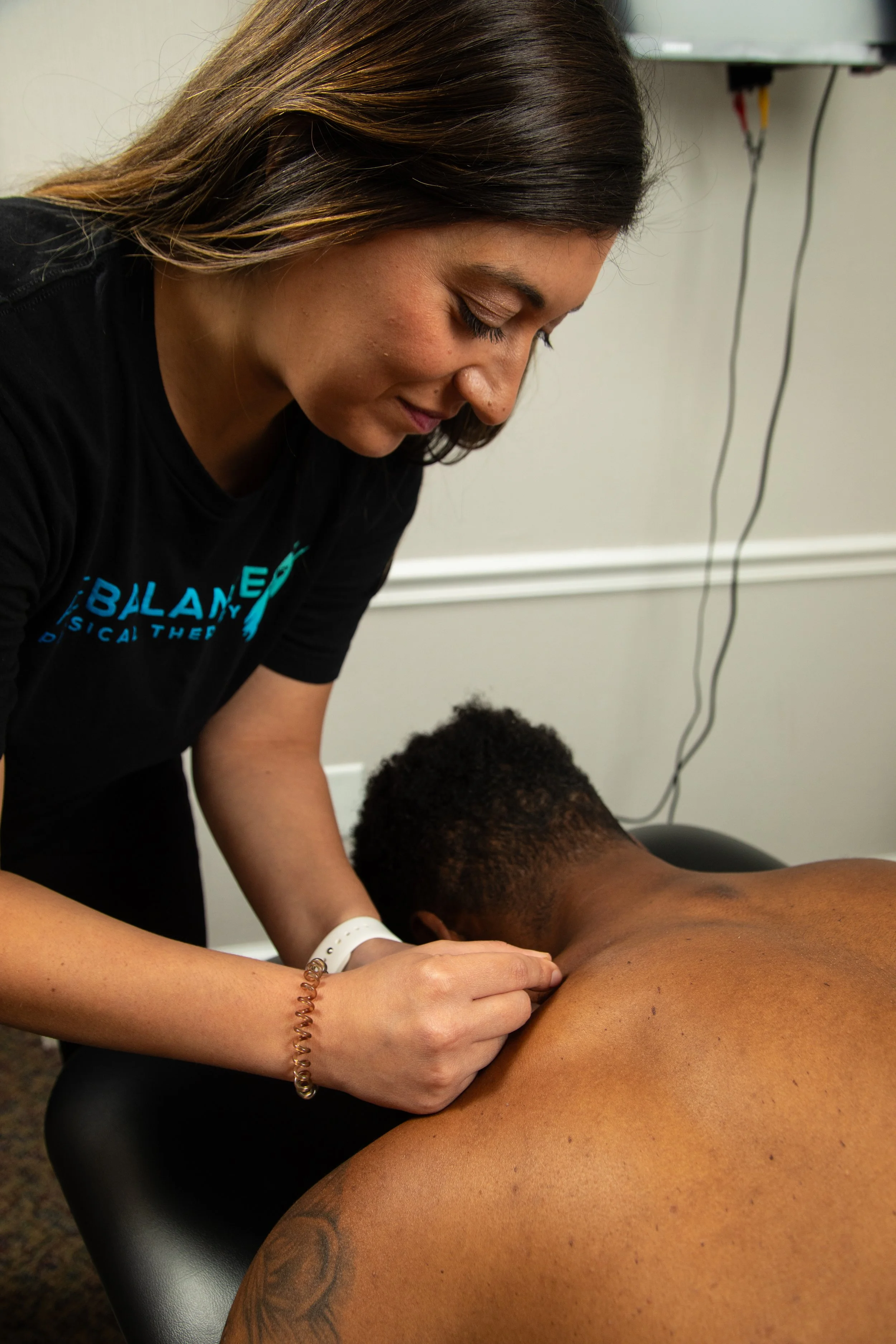3 Reasons Why Dry Needling Is “On Point”
Do you feel like no matter how much you stretch, you are still stiff and holding muscle tension?
Dry needling is for you!
Dry Needling is a technique that uses a monofilament needle inserted through a guide tube into affected tissue for pain relief. Dry needling is comparative to acupuncture, however it is used in different manners and for different purposes. While acupuncture is used for energy or “chi” alignment, the purpose of dry needling is more localized to muscle, tendon, and nerve function. In this blog, we will discuss only 3 benefits of needling, however many more could be listed. Dry needling is just one service that is provided at Rebalance Physical Therapy in Greenville, SC. To learn more about the other services provided at this clinic, click the button below.
What are the benefits of Dry Needling?
Reduction of pain
A significant benefit of dry needling is its ability to reduce pain both in new and old injuries. The needle is inserted into the painful area/trigger point to produce a mechanical and chemical response that will lead to pain reduction and decreased muscle tension. This release can produce what we call a twitch response, where the muscle contracts and there is an increase in blood flow to the area. This creates a decrease in overall pain and improvement in muscle function. This is very effective in various conditions such as tendonitis, trigger point related pain, chronic muscle guarding, and myofascial pain syndromes.
“I came to Rebalance after discussions with my physical therapist and chiropractor about the neck muscle spasms I was having. I had X-rays, an MRI, multiple doctor visits, cupping massages, and stretching to try to relieve the issue. Adi made me feel comfortable and explained to me what was going on and why so I could understand. My muscle spasms are gone and now just working on random headaches and some muscle tightening. I'm very happy with my results and wish I would have known about this sooner.”
-Holly
2. Increase range of motion and flexibility
Another related benefit from dry needling is increased flexibility and range of motion. After the muscle twitch response from the needling of trigger points, the muscle is now allowed to return to its resting position and be in a more “relaxed” state. The needle initially increases blood flow to the area through micro-trauma of the tissue while allowing the muscle to return to resting position. This increase in blood flow to the muscle is very helpful specifically for chronic conditions where the body has adjusted to this “new normal” and can be a catalyst into healing! Below is a quote from a patient post needling:
“ I had a hamstring injury that wasn't healing in a normal time frame - it had become chronic. It was always tight, and it wasn't progressing. I began getting discouraged about it. I reached out to Rebalance, and they suggested a dry needling session. I was a little skeptical as to how much it would help, but it turned out to be the breakthrough that I needed! The hamstring had been injured for 9 weeks, and within a few days of the first needling session, it felt significantly better. The constant tension I had been feeling was gone for the first time in weeks! I got a second session 10 days later, and within a couple days the hamstring felt back to normal! I'm incredibly thankful to have had their help, and I am glad to have them as a resource here in the Greenville area going forward.”
- Cody
3. Improvement of function and daily activities
As well as pain reduction and improvement in range of motion, dry needling is beneficial for improvement of function. Numbness and tingling can be a big reason why people are not able to perform certain activities. Numbness and tingling can come from different reasons, but one reason may be due to compression of surrounding muscles. Once those surrounding muscles are released through dry needling, the numbness and tingling therefore decrease due to pressure being released from the nerve.
Another benefit for improvement of function is the muscle being re-aligned and therefore better able to fire correctly again. An injured muscle tends to fire incorrectly or not activate as appropriately or efficiently as normal. Needling goes into the muscle and serves as a jump start for the muscle to be reconnected to the brain and function as it is intended. Read what one of our patients had to say about their specific success story through dry needling below:
“I was experiencing numbness and tingling sensations down my arms to my hands/fingertips. My neck, shoulder blades, and right arm was constantly sore with discomfort. I tried chiropractic adjustments, workouts to target the area, multiple stretches, massage gun, etc. I was referred by someone who had work done by Adi, and couldn't believe the results that had taken place so quickly. I had to see for myself! Adi made me feel like she cared! She was extremely personal and took time to explain everything. I’d compare it to having a best friend in the field that gets to fix you! LITERALLY THE NEXT DAY I HAD NO PAIN, NO SORENESS, NO TINGLING SENSATION AT ALL! I recommend anyone with the same/similar issues to give this business a shot!! Definitely WORTH IT!!!"
- Brandon
And so many more…
Increased oxygen to damaged tissue, improved neural connection with brain, and improved healing of tissue, improved tissue reconstruction and more.
In order to get the most benefit from dry needling it is imperative to follow up with movement and overall improved activation of muscles needled. Strengthening the new gained motion will allow for long lasting results and improved outcomes.
A few more questions?
Is dry needling painful? This question is hard to answer objectively due to everyone having a different pain tolerance. Most of our patients say it is not bad once they know what to expect. It’s always the fear of the unknown that is the worst part!
The insertion of the needle can cause a pin prick sensation; however a dull toothache sensation is the goal. The twitch response that is sometimes elicited with dry needling can be a short term irritant causing muscle soreness for 24-48 hours.Who can benefit from dry needling? Dry needling can be useful for a whole gambit of diagnoses. Almost any area of the body that is hurting or holding tension could be a potential candidate for needling. Some common examples include neck pain, shoulder impingement, headaches/migraines, low back pain, hip pain/tendonitis, sciatica/piriformis syndrome, plantar fasciitis, shin splints, jaw pain/TMJ and so many others.
Ready to give Dry Needling a try?
Conclusion
How can dry needling benefit vestibular dysfunctions?
Dry Needling can help as an add-on in vestibular rehabilitation to address headaches and migraines associated with stiffening up of the head and neck due to reduction of head movements. The vestibular system fires when we rotate our head to either side. So, if you are having more neck pain, you typically start muscle guarding and therefore do not turn your head as much…leading to reduced firing of the vestibular nerve.
Seeing a licensed vestibular therapist when experiencing any types of dizziness, vertigo, or feelings of off-balance can be the difference between living your best life and living a life in fear of falling or with constant limitations. Don’t settle for the latter!




